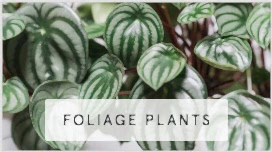Biophilic Design 101: The Basics

Biophilic Design 101: The Basics
Nature and nurture go hand in hand. There’s a comfort to be found in the wonders of the environment, from the simplicity of lush green trees swaying overhead to the crispness of the bright blue sky dotted with fluffy white clouds. Unfortunately, these beautiful elements found so easily in the great outdoors aren’t always within easy reach.
That’s especially true for those who work in closed-off offices without windows or whose homes lack the natural light so closely linked to uplifting moods and brightening spirits. The spirit of biophilic design is rooted in the very real notion that people and nature are intrinsically linked to one another.
What is Biophilic Design?
At its core, this concept refers to the synergy between humans and nature. It aims to bridge the gap that may exist between the two. By striving for and implementing methods of connectivity between the surrounding world and the human experience, biophilic designers can transform everything from ordinary homes to simple workspaces.
In the modern world, biophilic design takes on greater importance than ever before. Although the term was initially coined in 1964, its popularity has only truly grown in recent years. With a stronger interest in sustainability and eco-friendly design practices, people are now more focused on implementing natural details whenever and however they can. It nods to the interest in conserving natural resources, reducing the carbon footprint so deeply responsible for dramatic environmental shifts, and renewing a commitment to the planet.
How is Biophilic Design Implemented?
The key is to be intentional in how you execute a biophilic design. Many people have a general idea of the concept. They may install floor-to-ceiling windows in an effort to introduce more natural light to a space, for example, and brighten up the ambiance with a few houseplants. Yet these simple steps alone can only do so much. The heart of biophilic design unfolds to reveal so much more.
There are several key methods that you might implement to incorporate true biophilic design elements in your space. Among the most important is the view. With a clear view of the outside world, a stronger union between the two worlds begins to form. It’s equally important to add elements that touch on the beauty and facets of Mother Nature’s best characteristics. For example, integrating water as a feature in a home or workplace is reminiscent of rain. Installing strategic lighting that warms the space is an effortless way to recall the beauty of the sun.
Those are far more obvious symbols of nature, and their effect on people is easy to understand. Brighter light, studies find, not only lifts spirits but even boosts productivity in the workplace. Indirectly, though, the connections to nature are not as obvious or loud. It’s up to you to implement them in a way that captures the spirit of the biophilic movement.
One such example is the clever use of patterns, materials, and textures throughout a space. Natural details like bamboo and straw can be expertly woven into the fabric of any room, as a simple example. The benefit of such materials is that they required minimal work to process. Going deeper, it’s important to seek out products that are locally sourced.
It’s yet another way that biophilic design works — your interest in the product extends from its face value to its life cycle, from the moment of production to the moment it arrived on your doorstep. When a product is responsibly produced with the greatest attention given to the needs of the environment, you can feel good implementing it in a biophilic space.
What are the Benefits of Biophilic Design?
There are many ways to make biophilic design an integral part of your space, be it personal or professional. The bottom line is that you’ll reap the benefits slowly but surely, especially as you begin to learn more about the concept, expand your horizons, and develop new methods of honoring the environment through your decorating skills.
Research suggests that strengthening your connection with nature can have an enormously positive effect on health and wellbeing. Breathing in the fresh air can bring about a sense of relaxation, minimize stress, and calm frayed nerves. In some cases, even physical improvements may occur, like a reduction in blood pressure levels and heart rate.
The average biophilic-designed space incorporates an abundance of plants, too. A NASA study conducted in 1989 found that many conventional houseplants possess impressive air-cleaning properties, which makes them an exceptional addition to any space regardless of the reason. Yet from the perspective of becoming closer to nature, plants boost air quality and mood at the same time. That can lead to increased feelings of well-being and even stimulate creativity and positivity.
How Can You Make Biophilic Design Work for You?
Like any major change, implementing something new takes time and work, as well as focus and energy. Planning such a change begins with a clear outline of how to begin. If you want to revamp your space and give it a natural touch, you’ll need to truly commit to it from the deepest level possible.
Start with a clear-cut, well-written plan that helps you walk through the process step by step. You’ll be grateful that you took the time to map out how you plan to go about the biophilic design process, and you may want to refer to it throughout just to be sure that you’re on the right track with your makeover project.
Then take a look around your space. If it could use some attention, grab a few trash bags and get to work. Nature is not cluttered, messy, or overwhelming. It does not rob you of your peace or take away your sense of calm. A cluttered room, by contrast, can do all of those things. It can be very easy to get caught up in those emotions, even if you aren’t aware that you’re experiencing them.
This is why it’s so critical to truly embrace the biophilic lifestyle. Decluttering the space you want to revamp can be life-changing on so many levels. By eliminating the buildup that surrounds you, you’ll have far more room to make this new, refreshed, back-to-nature design a reality. It will also be far airier, which is a hallmark of any well-articulated biophilic design.
Now consider whether you can take advantage of a view of any kind. If you have windows and the shades or blinds are always drawn, now is the time to let that light filter inside. The more you declutter, the more you’ll appreciate the presence of natural light as it illuminates the room and invites the glorious sun inside your space.
Then, move on to the easiest step of all: purchase some plants. It’s one of the simplest ways for anyone to make a biophilic design concept a reality. Think about how you want to go about this. Many people elect to place a plant or two in the room, either on the floor in the corner or on a tabletop. Others choose to nurture an indoor garden loaded with thick, leafy plants. Whatever your choice, make sure you treat your plants the right way so they thrive for as long as possible.
Don’t let this be the beginning and end of your biophilic design project, though. Anyone can add a plant or two to a room or office and call it a day. Your aim is to take it a step further if you hope to achieve a true biophilic look. Plants set the stage. From there, you need to focus on continuity throughout the space. Situate the plants in precisely the right space where they have the best possible opportunity to thrive. In most cases, that means they should receive plentiful exposure to natural light.
If there is no light in the room, hope isn’t lost. Consider implementing or installing a series of lights designed to replicate the appearance of natural light. Some even support the body’s natural circadian rhythm, which regulates your sleep cycle and helps you feel tired when it’s time for bed at the end of the day. You can thank the magic of biophilic design for bringing you a step closer to a better night’s sleep.
Finally, work on layering your room with natural elements that reflect the wonders of Mother Nature at her finest. Plants and lights bring plenty of personality to any room, but you don’t have to stop there. Consider replacing existing leather furniture, for example, with more naturally derived pieces. Using materials like cork and straw can be interesting, especially if your goal is to implement at least one or two eye-catching focal points.
Don’t feel you have to shy away from color, either. While it’s true that many natural tones are earthy and relaxed, there’s plenty of room in the palette for richer, darker tones that add a subtle pop to the space. Choose vibrantly patterned flower pots, for example, or add a luxe throw pillow in a different shade to the room.
The bottom line is that biophilic design can be transformative in many ways. The benefits are not just limited to the appearance of the space, but the way the newly implemented elements make you feel. Offering both physical and mental advantages, biophilic design is so much more than an ordinary concept.












